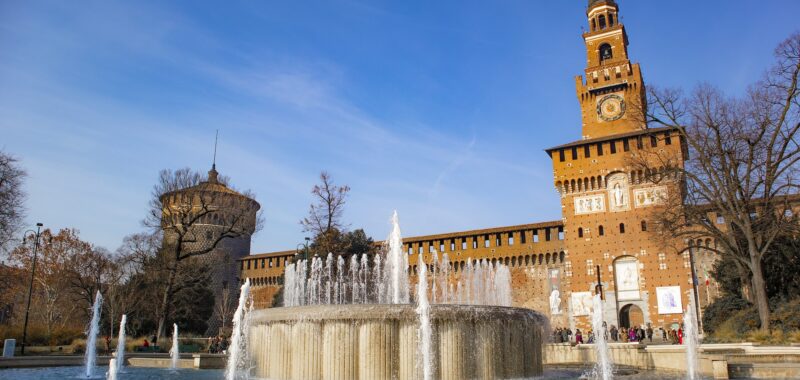Italy’s famed Sforza Castle is a focal point for historians, architects, and art lovers—as well as a source of many legends. One of the most prominent rumors surrounding the over 575-year-old fortress has long been the existence of secret passageways beneath the grounds originally hinted at by Leonardo da Vinci. But according to recent, ground-penetrating radar and laser scans, da Vinci’s references to underground tunnels aren’t myths—they’re real, and some of them may have been used to secretly ferry a Duke of Milan to his late wife’s crypt.
The version of Sforza Castle that exists today is actually its second iteration, and was built in 1450 on the ruins of a previous fortress destroyed during political instability three years earlier. After Ludovico Sforza (also known as Ludovico il Moro) took over from his father in 1494, the newly installed Duke of Milan commissioned multiple artists to travel there and contribute to decorating its rooms with frescoes. One of these visitors, Leonardo da Vinci, would end up in the Duke’s service for years, during which time he famously began work on an uncompleted equestrian monument to il Moro’s father, Francesco.
Da Vinci’s tenure at Sforza Castle also resulted in sketches and notes referencing hidden underground tunnels. One of these served a very specific purpose—stretching underneath the castle’s “Ghirlanda,” or outer wall, and nearly two-thirds of a mile to the Basilica of Santa Maria delle Grazie. There, il Moro would privately grieve near the tomb of his late wife, Beatrice d’Este, who died during childbirth in 1497.
As Arkeonews reported on January 16th,researchers from the Polytechnic Institute of Milan visited the site with ground-penetrating radar equipment to map Sforza Castle’s subsurface to conclusively determine if the corridor existed. These tools emit electromagnetic waves that travel into the soil and bounce back signals that experts use to interpret ground density, soil composition, and even empty spaces.
“The goal is to create a digital twin of the Sforza Castle, a digital model that not only represents the current appearance of the Castle but also allows you to explore the past, recovering historical elements that are no longer visible,” Franco Guzzetti, a geomatics professor at the Polytechnic Institute of Milan, said in an accompanying university announcement.
After combing the area, Guzzetti and collaborators detected the existence of multiple underground cavities and passageways roughly 1-2 feet underground. In addition to il Moro’s route to his late wife, researchers believe the many other structures could have served defensive and military purposes.
“The castle is not just a monument; it is a repository of stories waiting to be told, each layer of stone representing the lives and legacies of those who came before,” the researchers wrote in a separate statement for The Independent. “By exploring these hidden depths, researchers are ensuring that the castle remains alive in the collective consciousness of both locals and visitors.”


